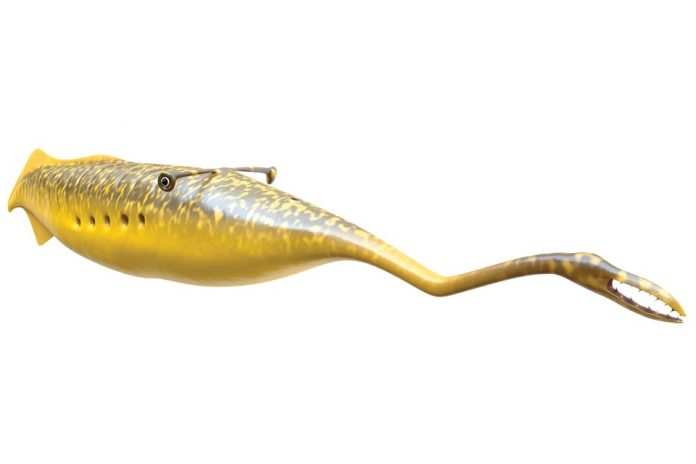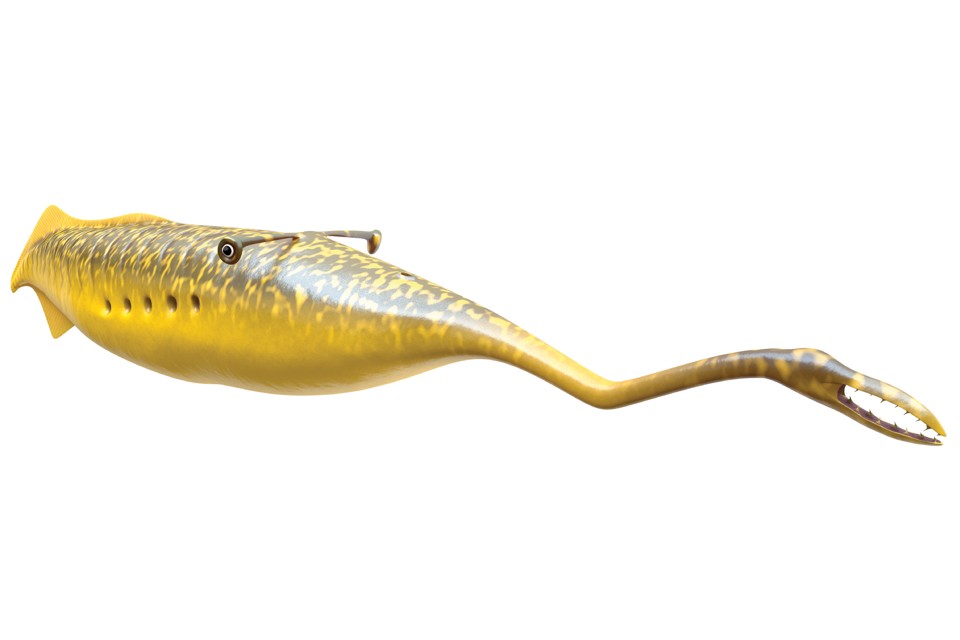
The Tully Monster was a pretty cool animal – and not just because of its name. It’s one of the most enigmatic specimens ever found.
And now, half a century after its discovery, researchers claim to have found the creature’s place in the tree of life. According to their analysis of a body structure previously assumed to be the gut, the strange blob of a creature is actually a vertebrate in disguise – a relative of modern lampreys.
“There are plenty of fossils that are really enigmatic, but the Tully Monster has always been kind of in a class of its own,” Yale University’s Victoria McCoy, lead author on the study published Wednesday in Nature, told The Post.
When the first Tullimonstrum gregarium fossil was uncovered by Francis Tully in 1958, the amateur fossil-hunter wasn’t sure what the strange Illinois native might be. Even when professional paleontologists examined the specimen, they were puzzled. That’s not so unusual, but it is for a fossil of T. gregarium’s age: At just 300 million years old or so, it’s from a time when lots of more familiar creatures lived. Scientists are generally able to sort newly discovered animals from this era into previously defined categories. But the researchers who studied Tully’s “monster” took nearly a decade to publish their first official description of it.
Even then, “the only conclusion was that it was so bizarre looking that they couldn’t assign it to any known family of animals,” McCoy explained.
And indeed the mysterious fossil looked monstrous: As more specimens were found in the Illinois area (it’s now designated as the official state fossil) it became clear that T. gregarium had a strange form. The creature had a long, eel-like body that could grow up to a foot long, and a skinny snout topped off with a long tooth or claw. Its eyes were at the end of short, rigid horizontal stalks – much like the eyes of a hammerhead shark.
Some previous research had suggested that T. gregarium might be some kind of mollusk – a sea snail or slug – but it lacked some of the features you’d expect. Another study used computer analysis to look back at previous descriptions of the creature and try to place it in a family, and came to a strikingly different conclusion: The Tully Monster, though apparently made entirely of soft tissues, was from an extinct group of chordates – the phylum that includes vertebrates like ourselves.
The new study takes this a step farther, suggesting that the Tully Monster was actually a jawless fish like today’s lampreys.
The finding relies on the analysis of more than 1,000 fossilized Tully Monsters from Chicago’s Field Museum, but it hinges on a case of mistaken identity.
McCoy and her colleagues believe that the structure usually identified as T. gregarium’s gut is actually a sort of primitive backbone called a notochord.
“Once we saw that, it was pretty clear,” she said.
McCoy believes that the notochord was misidentified because T. gregarium is a vertebrate, but a soft-bodied one – and that’s something that wasn’t well understood 50 years ago. McCoy and her colleagues used X-ray analysis at Argonne National Laboratory to puzzle out some of the structures in the creature, and they noticed that the “guts” of the T. gregarium didn’t seem to have been fossilized with the same minerals as guts from creatures in the same cave – suggesting that a different type of tissue had once formed the structure. Local notochords made a better match, and also explained why the “gut” stretched from the eyebar to the tail, which McCoy says would have been unusual.
Similar analysis of the minerals present in the fossilized teeth suggested they were made of the same kind of tissues that make lamprey teeth.
There are some body differences between familiar lampreys and the Tully Monster: Modern lampreys have the same long, tube-like bodies, but they have small tail fins and long dorsal fins. Tully Monsters had the opposite. McCoy suggests that the Tully Monster may have evolved to propel itself forward with tail movement, as opposed to its close relatives that had bodies made for full-body wiggling.
In other words, even if T. gregarium really was a lamprey, it was still an oddball.
Assuming no one upends the Tully Monster’s new designation, scientists can now focus on figuring out how the strange critter lived based on what we know about its close relatives. It may have found a phylum, and perhaps even an order, but the state fossil of Illinois has plenty of mystery left.
(c) 2016, The Washington Post · Rachel Feltman



